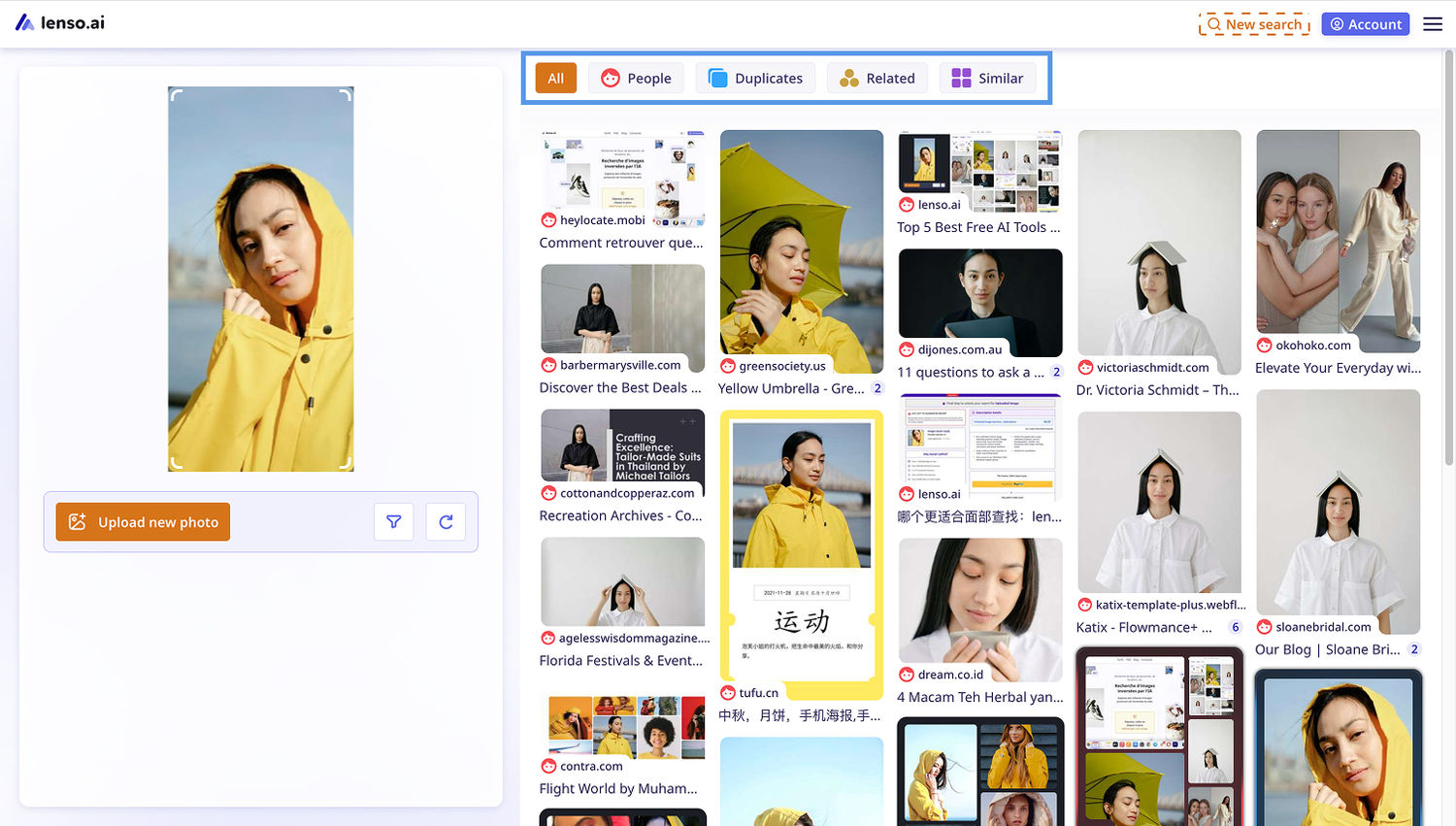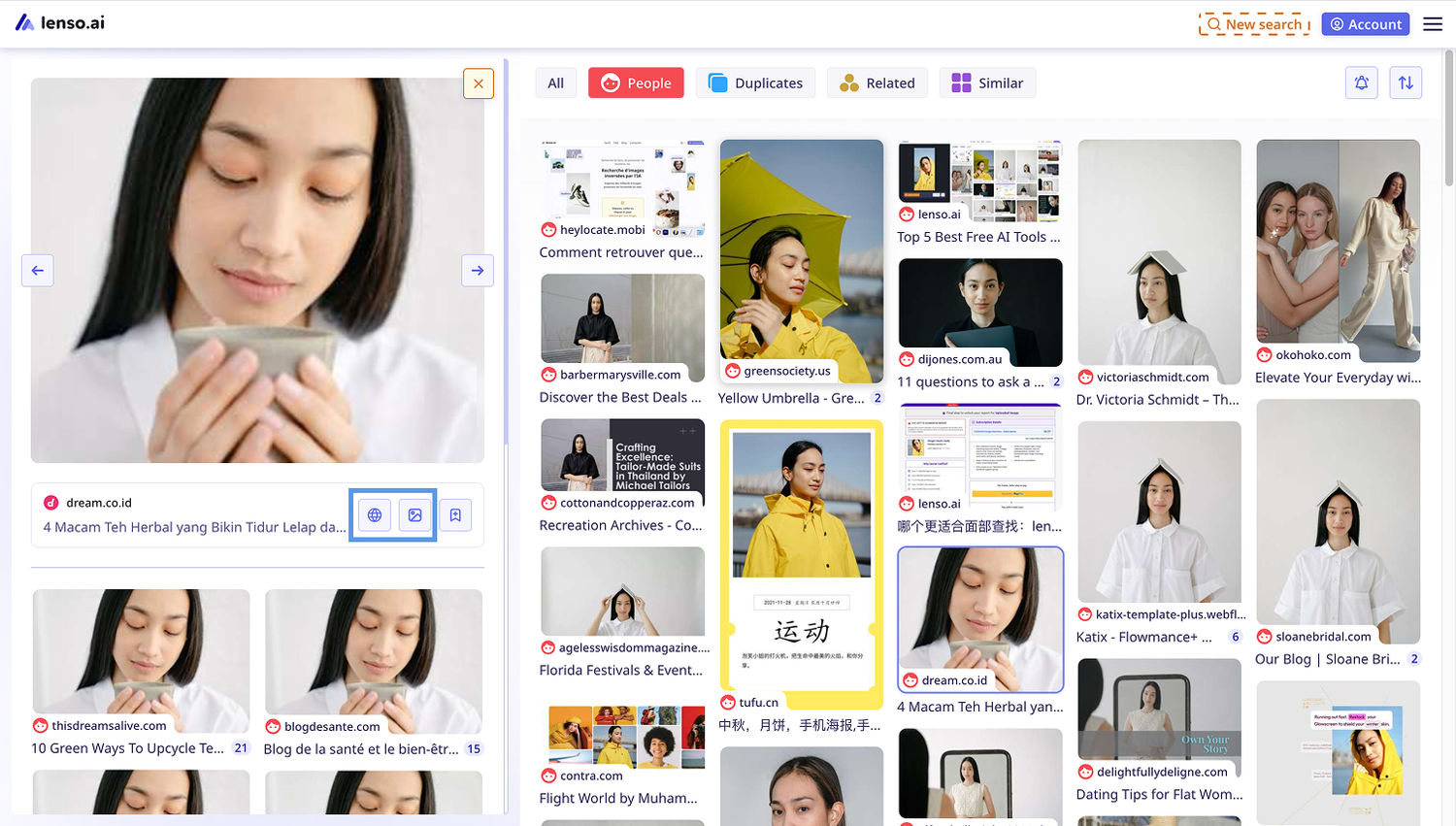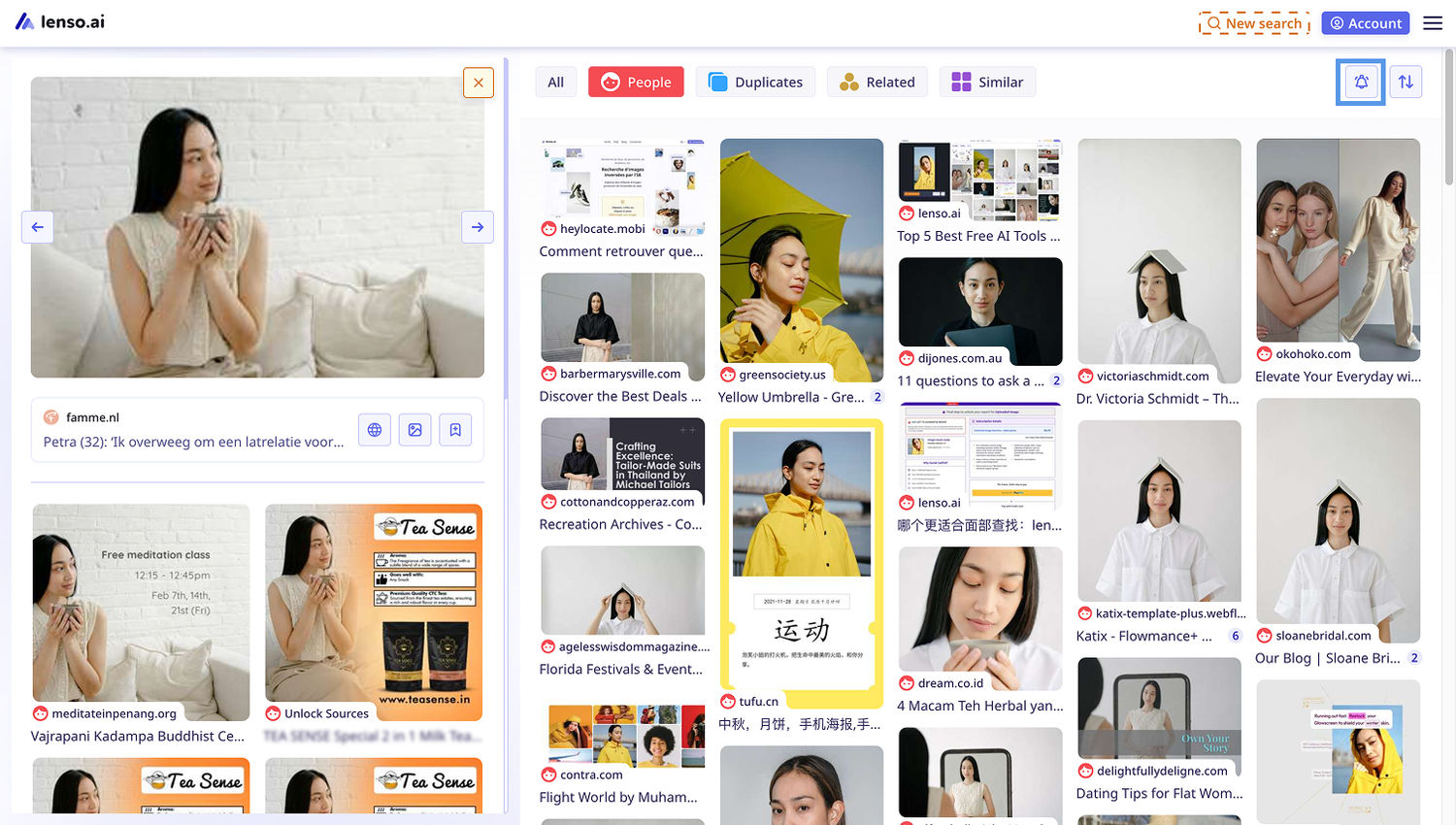
Preview in:
How to Reverse Image Search?
To make a reverse image search with any photo, follow these simple steps:
- Go to lenso.ai, or use the upload field below:
- Upload your image on the main page
- Once the search is made, you can see an array of results, each in a different category.
- Choose the category you like from the bar on top

- Click on the result you like
- Open the result in a new tab by clicking the image icon, or open the source with the web icon

Get notified!
Can’t see the result you like? Set up an alert with the bell icon! (Available for people, places and duplicates only)

Learn more about the features of lenso.ai!
Reverse Image Search - How does it work?
Reverse image search is a technology that allows users to search the internet using an image instead of text. Rather than typing keywords, you upload a photo or paste an image URL, and the search engine finds visually similar images and related information.
Here's how it works:
1. Image Upload or URL Input
You start by uploading an image or entering its URL into a reverse image search tool (like lenso.ai, Google Images, Bing Visual Search.
2. Image Processing
The tool analyzes the uploaded image by breaking it down into features such as colors, shapes, textures, and patterns. Advanced algorithms or AI models may also extract metadata and facial or object recognition features.
3. Feature Extraction and Matching
The system generates a unique digital signature (a "fingerprint") of the image and compares it to a vast index of indexed images. This involves machine learning and computer vision techniques.
4. Search Results Generation
Based on the matching process, the tool returns results that may include:
- Exact or modified copies of the image
- Visually similar images
- Websites where the image appears
5. Filtering and Ranking
Results are filtered and ranked based on similarity, relevance, resolution, and source authority.
What is Reverse Image Search used for?
Reverse image search can be used in various industries. Here are the most common uses:
- Finding image sources or higher-resolution versions
- Verifying authenticity or identifying fake images
- Tracking image usage across the web
- Discovering similar content or related visuals
- Verifying the identity
Try it yourself!
Make a reverse image search with lenso.ai and find out where your images are used online.
Continue reading

Guides
How to Find Locations from an Image? | Place Search Online
Looking for buildings, places, locations and landmarks online used to be a struggle. Nowadays, in the age of Google Maps and Place Finders, such as lenso.ai, it’s easy to locate any place from just a photo. In this article, we will show you how you can find places from a photo and refine your search with various filters.

Guides
How to prevent image theft on exclusive content platforms?
Unfortunately, image theft is one of the most common forms of online crime. It often leads to copyright misuse, unauthorized usage, and scams that can seriously damage a creator’s brand and income. So how to prevent image theft on exclusive content platforms and protect your online presence?

Guides
3 Best Google Lens alternatives for reverse image search
Tired of using Google Lens, which brings less and less accurate results in its image search? It’s time to try something new: check out the 3 best Google Lens alternatives for reverse image search.

Guides
How Reverse Image Search Can Help Detect Unauthorized Logo Usage
Unauthorized logo usage, such as your logo appearing on counterfeit products or scam sites, can severely damage your brand reputation. Take a look at how reverse image search can help you put a stop to these actions and make your brand identity more secure online.

Guides
AI image search with lenso.ai: How to find and protect your photos online?
Images that were once shared online stopped being safe and protected. There are many situations where images get leaked, and you’re not even aware of it. So how can tools like lenso.ai’s image search help you find and protect your photos online?
